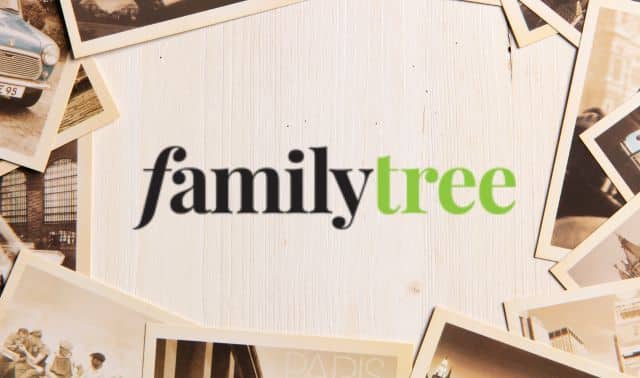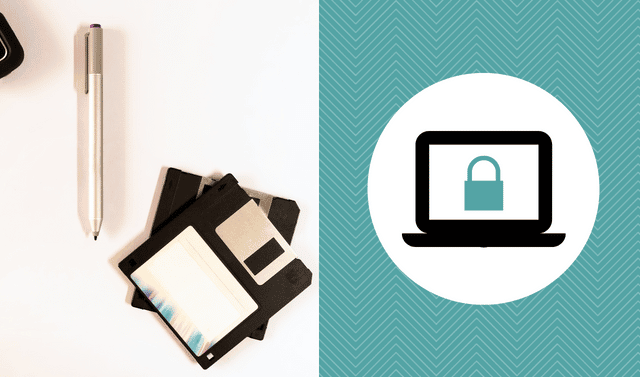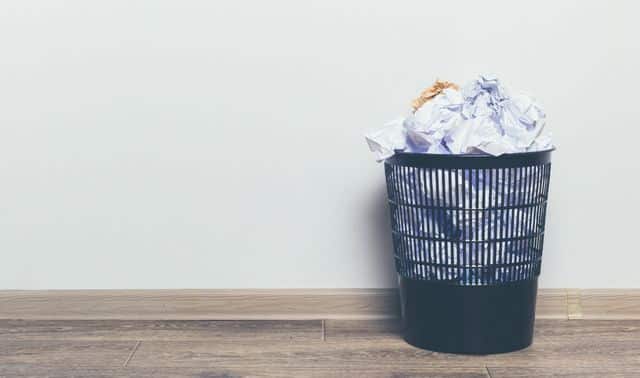
Using a soft, photo-safe pencil, I write on the bottom back of each photo the mother and father of the person pictured. This helps if several people in your family have the same name, and the only way to tell who’s who at a quick glance is to know their parents’ names.
– Jasmine Bucher, Palmyra, Pa.
I scrapbooked my mom’s parents and siblings on separate pages. On each page, I used a copy of the same small group photo, with that person circled to show where he fits into the family.
– Phyllis Driver, Kokomo, Ind.
Use a different color scheme for every family line in your album. This helps to keep the family branches separate — whether you have them all in one scrapbook or in several. You also could use a different color or shade for each generation if you’re including collateral lines.
– Stacey Dietiker, Independence, Mo.
I always try to name the buildings in the backgrounds of my photos. Many of these structures arc still standing today, but have been renamed. If a relative’s employer occupied the building, I identify the company as well. I include the name and address of the studio that developed the photo, too.
– Kay Story, Wichita Falls, Texas
I’m the keeper of generations of photographs, newspaper clippings and other memorabilia for my family. The sheer volume of things people hold on to in a lifetime can be considerable, but that doesn’t mean it’s all relevant to my family history project. I’ve learned that too much is just that — too much. Once I made the decision to choose the cream of the crop and let go of the lesser items in my possession (for example, keeping one good photograph and ditching several bad shots of a family member), my family histories became interesting and manageable.
– Melanie Stiles, Cypress, Texas
Use copies of photos or precious documents in your heritage album and store the originals in another safe place. This will prevent damage to irreplaceable items as the album is carried around and paged through. And even the most conscientious scrapbooker may forget to use the best archival techniques, causing damage.
– Marjorie Osterhout, Seattle, Wash.
Black matting is beautiful for photos in heritage layouts. But instead of purchasing and cutting all that black cardstock, decide where your photo will be on the layout, position a ruler ¼ inch from the picture’s edge and fill in a border around it with a black photo-safe pen. (To avoid accidentally marking on the photo, don’t adhere it until after coloring.) This truly makes it look as though you’ve matted the photo on black cardstock.
– Donna Lafleur, Athabasca, Alberta, Canada
When my father-in-law entered a nursing home, I made him a memory album so he’d remember good times and family. I started with a one-page family history of important dates such as births and deaths. Then I added pictures of his parents and grandparents, his high school days, his marriage and children, his WWI military service, and his work history as a milkman and other jobs. Next, I included pictures of his kids and grandkids. My father-in-law would pull out the book and tell stories for hours to anyone who cared to listen.
– Raynita Fenter, Midland, Mich.
You know you should date your photos, but do you also note the location and time of day? This is all pertinent information. Any comments you can add about the events of the day are icing on the cake.
– Gary Winters, El Cajon, Calif.
I take pictures of 3-D memorabilia such as clothing, jewelry and Bibles. Then, I’ll either scan the photos into my computer to include with the person’s data, or place the pictures in a scrapbook. This was a great way to preserve the fragile articles of clothing I inherited from my great-grandparents, and share them with the rest of my family.
– Janis Reister, Hillsdale, Mich.
Encourage family members to record their thoughts in their own handwriting. Not only will you have great memories straight from the sources, but you also will be able to preserve their handwriting. And in the future, being able to compare penmanship samples could help you identify mystery photographs.
– Megan Welty, Antioch, Calif.
Incorporate your family’s ethnic background into your scrapbook. I created an album about my Swedish grandfather’s family using a Swedish rosemaling picture (I found it on the internet) to decorate the section dividers. On other pages in the album, I included the lyrics (in Swedish as well as English) to the Swedish national anthem, the Happy Birthday song and a religious hymn.
– Linda J. Landreth, Corpus Christi, Texas

– Kari Roach, Omaha, Neb.
While creating a scrapbook page of my mother’s 1936 trip to New York City with her high school chorus, I found several postcards she had sent home. I wanted to show the postcards, but didn’t want to cover up the messages or her handwriting on the backs of the cards. I scanned the backs of the postcards and used them as part of the journaling by combining them with the real postcard fronts (treated with deacidification spray) in a collage. I was able to include all the information from the trip and had to add only a title and date to the page.
– Carolyn Cleveland, Maysville, Ga.
The oldest of three sisters, I inherited all the family photos. I’ve been dating and labeling as many as I can. Then I scan each image and burn it onto a CD. Each photo is numbered and corresponds to a text file that details names, dates and other information. I also include the text file on the CD. I’ve given a CD to each sister, so if anything happens to the original photos, my sisters will have copies.
– Liz Weiers, Moose Jaw, Saskatchewan, Canada
When my grandmother passed away, she left a lot of pictures in no particular order. I organized the photos into themes and put them into an album. Then I had my mom, aunts and uncles write memories about the photos on the album pages. My big tip would be to do this when the grandparents are still alive!
– Nicola Park, North Vancouver, Wash.
Create an 8 ½×11-inch recipe book. Pur one recipe on each page, and above the recipe, explain why you chose to include it. Maybe it was a dish your mother made every Thanksgiving or it was your favorite food growing up — perhaps you have a funny story about a time you ate that particular food. [ learned new things about my mother’s family when she presented such a cookbook to my children.
– Renee Pearison, Crozet, Va.
Include newspaper clippings about relatives’ anniversaries in your album. Check the local newspaper archives for articles about 25th and 50th anniversary parties — an article might tell how the couple met and when they married, and could include a photograph. Historical newspapers are usually on microfilm and can be requested from your local library through an interlibrary loan program.
– Judy Zack, Okemos, Mich.
One of the best ways I’ve found to preserve my family history — especially personality traits — is to relate my ancestors to living relatives. For instance, I designed a scrap-book page of my mother when she was young, correlating her love of animals to my own love of animals. I also like to juxtapose pictures from 50 or more years ago with more-recent photos.
– Leslie Farmer, Gray, Tenn.
I inherited a family photo album from the 1860s. To preserve and share the contents (without taking apart the album), I made photocopies of the original page layouts and printed them onto acid-free, lignin-free paper.
– Mary Anne Malcolm, Toledo, Ohio
Each time I get my pictures from the developer, I immediately pick out the good ones for my album and put them into a photo-safe 12×12-inch page protector. I then take it to the store to buy supplies or add paper and stickers from my collection. When I’m ready to scrap those pictures, everything is together in one pack.
– Phyllis Carter, Rocklin, Calif.
Editor’s note: For long-term storage, keep photos in photo-safe boxes separate from embellishments and memorabilia.
Eyes on the Prizes
Each tipster received a scrapbooking book from Memory Makers magazine <www.memorymakersmagazine.com>. Ten winners — drawn at random from these tips — get prize packages from these scrapping-supply companies:
? Archival Methods
<www.archivalmethods.com>, (866) 877-7050
? Canson
<www.canson-us.com>, (800) 628-9283
? Celine Countryman
<www.celinecountryman.com>. (612) 455-2247
? Design Originals
<www.d-originals.com>, (800) 877-7820
? Dimensions
<www.dimension-crafts.com>, (800) 523-8452
? Far and Away
<www.farandawayscrapbooks.com>, (509) 340-0124
? Generations Archival
<www.generationsnow.com>, (314) 542-5400
? Hot Off The Press
<www.paperpizazz.com>, (800) 227-9595
? Karen Foster Design
<www.karenfosterdesign.com>, (801) 451-9779
? Making Memories
<www.makingmemories.com>, (801) 294-0430
? Paper Adventures
<www.paperadventures.com>, (800) 727-0699
? Salkura
<www.sakuraofamertca.com>, (510) 475-8880
? Stampendous
<www.stampendous.com>, (800) 869-0474
? University Products







